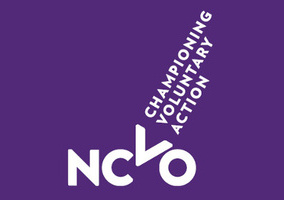The gender pay gap is in the news again this week after BBC journalist Carrie Gracie quit her role as China editor citing unequal pay.
NCVO's director of planning and resources, Susan Cordingley, explains why NCVO published its own gender pay gap figures, and why other charities should follow suit.
From next April, all organisations with 250 or more employees will be legally required to publish data on their gender pay gap. At NCVO we not only think that this is a good idea, but we’re encouraging all organisations to do the same – even those with fewer staff. This is why we’ve just published our own gender pay gap figures although we have fewer than 100 employees.
Why is this a good idea?
According to recent estimates from the Office for National Statistics the pay gap currently stands at 18.4 per cent for full-time and part-time employees in the UK. This gap has predominantly been driven by a lack of women in senior positions.
The rationale behind increased transparency around gender pay gap data is that it will make organisations think about and explain what they intend to do to tackle the so called ‘glass pyramid’ that women often come up against.
Those organisations that take the trouble to work towards closing any existing gap will undoubtedly benefit. Evidence shows that organisations who employ women in senior roles perform better, so it’s not only morally and legally the right thing to do but also makes good business sense. The reason for this is simple: All forms of diverse perspectives have the potential to challenge established decision-making processes, disrupt group think and lead to better performance.
For charities, moving towards greater transparency is particularly important if we want to live up to our own standards and meet the high expectations that our supporters and the wider public rightfully have of the sector. With so many good reasons to publish gender pay gap information, NCVO recommends that charities should do so even if they have fewer than 250 employees and aren’t captured by the legislation.
So what does NCVO’s data show?
To put our money where our mouth is, we have just published our own gender pay gap figures.
As will be the case with many voluntary organisations, our data is characterised by the fact that NCVO employs more women than men. While we pay everyone on the same grade exactly the same salary, there are proportionately more women than men in lower grades and in part-time roles. Once jobs are placed in quartiles, a gender pay gap arises in the upper quartile. This is because we have a male chief executive and of the three directors I am currently the only woman.
In the interests of being a good employer, NCVO already offers a range of family-friendly and flexible working policies designed to support women. While families are increasingly taking advantage of equal parental leave, women are overall still more likely to take time off work to care for children and family. This can hinder their career progress. A recent staff survey showed that our staff really appreciate these policies, including paternity leave, flexible working hours, remote working arrangements, and enhanced maternity pay, which we mirrored in our shared parental leave arrangements.
What’s next?
For most organisations gender pay gap reporting will only be the first step and should be followed by a more granular analysis and subsequent action. This may well mean that more family-friendly policies need to be introduced on an organisational level. I think we would all like the charity sector to be, and be seen to be, exemplary in this regard, so I hope your organisation will give consideration to undertaking and sharing pay gap reporting.
In the long term, progress will happen when we, as a society, begin to value the skills acquired by caring for children and family in the same way that we value those gained in a workplace. Only then will women, and men, returning to work after a period of absence be afforded the opportunities to return to their career where they left off, rather than several rungs down the ladder.
Susan Cordingley is drector of planning and resources at NCVO
Related articles











